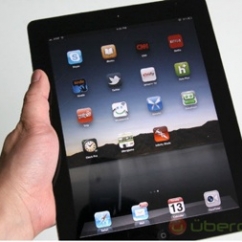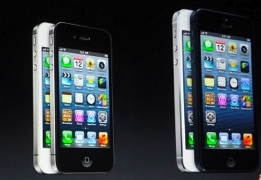Articles and News
LUXURY TECHNOLOGY DILEMMA: SHOULD SALES ASSOCIATES HAVE A SMARTPHONE, TABLET, BOTH, OR NEITHER? | September 19, 2012 (0 comments)

Merrick, NY--We’ve all heard that “technology makes things easier and faster.” And while that may be true, deciding on the right technology for your business can be a true challenge.
With a number of luxury retailers, such as Nordstrom, Apple and Neiman-Marcus, equipping sales associates with smartphones and/or tablets to use for everything from sales assistance to on-the-spot checkout, perhaps you are thinking it would be a good addition to your store? Or do you already use a tablet computer (thanks to many suppliers who offer them with an order) or smartphones but feel it’s time to upgrade? Indeed, according to the most recent Mintel study of the U.S. luxury market, the devices themselves are considered by many consumers as a luxury purchase.
If you’re considering either adding or upgrading the devices but you don’t know whether it makes good business sense—or what features to look for—here are a few things to consider:
What’s the main purpose? Why do you think your sales associates could use either a smart phone or a tablet? Are they collecting customer data? Filling out wish lists? Taking photos of customers wearing jewelry for comparison? Offering on-the-spot checkout to customers? Texting customers when their repair is ready? Sending photos to customers of new inventory? Using apps to keep in touch? Sending anniversary/birthday/special occasion reminders?
It could be one or all of the above. And once you have either technology available, new uses will become apparent. While knowing the main purpose won’t guide you specifically to one or the other, it may help narrow your options and keep you focused on what will work best for your store.
Do you need an upgrade? The electronics industry thrives on upgrades. A few tweaks, and die-hard gadget lovers will flock to the latest iteration just because it’s there. But does having the very latest gadget really justify the expense of an upgrade? If you’re not sure about upgrading, consider how the smartphones and tablets are working now. Are they performing the tasks you need them to in order to best communicate and service your customers? If not, it may be time for an upgrade. Or, if they’re adequate now but you’re planning on using new technology in the near future, you may want to upgrade in advance to make sure the devices are compatible.
For example, many brands and retailers are adopting QR codes for users to scan for more information from ads or in-store. But older devices may not be able to run the latest code-reading apps. Or if your associates use smartphones with a credit card reader for at-the-showcase checkout, there may come a point where older phones are no longer compatible with the card reader software updates. Upgrades for a better video display are worth investing in to show product—but only if you feel it’s a significant enough improvement from the previous version.

QR codes, such as these, are becoming more common in both advertising and retail merchandising, for users to scan for more information.
Size does matter. For many years, cellular phones kept getting smaller. Now, smartphones are growing—quite literally. The new iPhone 5, set for release shortly, is taller than its predecessors. Meanwhile, tablets are shrinking: rumors abound of a new smaller iPad debuting soon. So when it comes to size, all bets are off.

The iPhone 5, right, is larger than its predecessors.
According to Bloomberg Businessweek, “Consumers use smartphones primarily for media and data capabilities, not calling features. That means they're not really 'telephones,' per se; to the average person, they are portable media devices. So why stick with a three-inch screen when you can have one three times larger? And if you do buy a tablet, why continue with a smart phone? At current prices of $200 to $400, the smartphone is too expensive to win the battle against tablets at a mass-consumer level.”
Bloomberg makes some good points, but there are reasons to continue with a smartphone. It’s small and portable. It’s easy for associates to carry and use. And, perhaps its greatest characteristic, it’s familiar. But it depends on what you need your sales associates to do with the device: do they carry the device all the time in a pocket or purse? Or does it stay at work on their desk after hours? If your choice boils down to those two options, then suddenly your decision is pretty clear.
What’s more cost effective? Smartphones are generally less expensive than tablets for the device alone, but phones have a monthly connection cost that includes both calling and data, whereas a tablet that’s WiFi (wireless Internet) only and doesn’t have cellular capabilities may be free of network costs. But the downside is that it’s only usable where there’s WiFi, which means your store has to have a wireless setup, and it can’t make or receive calls. Talking with your service provider can clarify these costs.
What do your ASSOCIATES want? Beyond the purpose, size and cost, you should know what the people that will be using it would like. If your sales associates like what you provide, they are more likely to put it to good use with your customers. If they are not familiar with the technology, some may be hesitant to learn. So ask: find out how they envision a smartphone or tablet being helpful in everyday situations. You may find a combination of both technologies will work best in your store.
What do your CUSTOMERS want? In the end, how your customers want to be reached is of upmost importance. Many jewelers report that customers LOVE getting a quick text when a new piece comes in or when their repair is ready. If your customers want texts, then figure out the best way to text them. If they like email, use email. If they prefer a quick phone call, then call. Ask a few of your better customers how they prefer to be contacted and see what they say. You might be surprised.
It seems conceivable at this point that smartphones will keep getting bigger and tablets will keep shrinking until one day they might be about the same size, carving out their own market share as a new gadget. We’ll see. For now, there’s no clear right or wrong – either or both are workable solutions. It’s all about supporting your sales associates as they connect with your customers, helping to grow your bottom line!
Top photo: Ubergizmo.com







